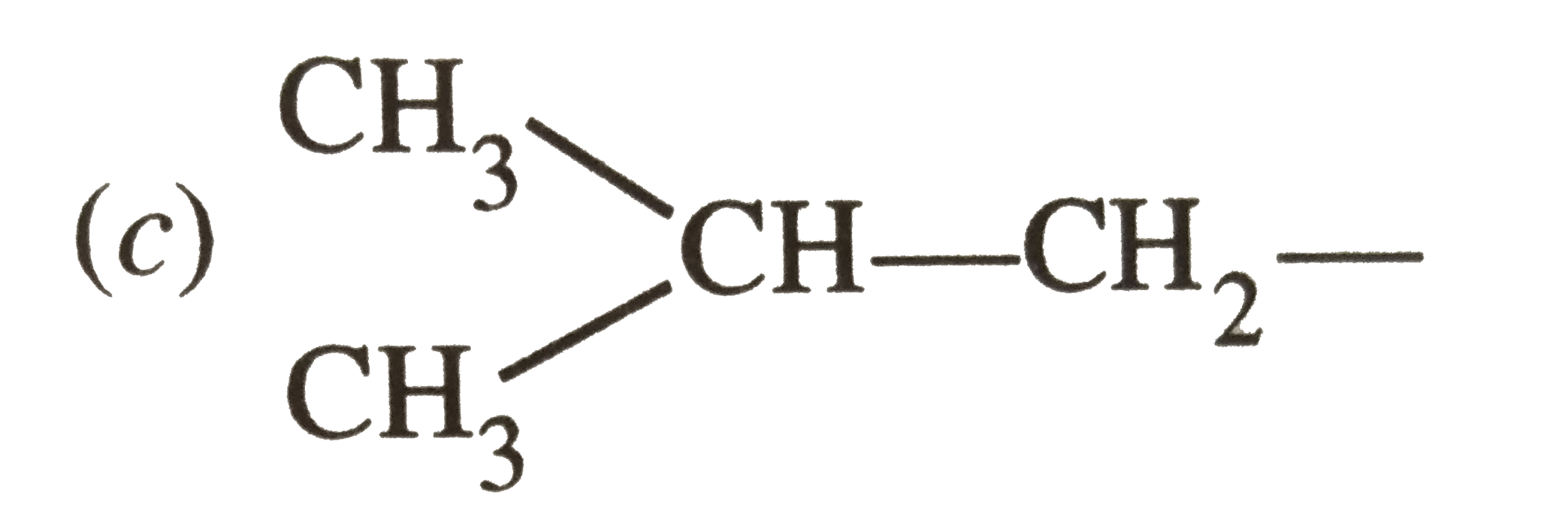What is the meaning of functional group in an organic compound ? Give the structural formula of the functional groups in (i) acetic acid and (ii) ethyl alcohol.
Step-by-Step Text Solution
Step 1: Define Functional Group
A functional group in an organic compound refers to a specific group of atoms or a specific arrangement of atoms that imparts characteristic chemical properties to the compound. It is the part of the molecule that is responsible for its chemical reactions and behavior.
Step 2: Identify Functional Groups in Given Compounds
For the compounds mentioned in the question, we need to identify their functional groups:
1. Acetic Acid (CH₃COOH): The functional group present in acetic acid is the carboxylic acid group (-COOH).
2. Ethyl Alcohol (C₂H₅OH): The functional group present in ethyl alcohol is the hydroxyl group (-OH), which characterizes alcohols.
Step 3: Draw Structural Formulas of Functional Groups
Now, we will provide the structural formulas for the functional groups identified:
1. Structural Formula of Carboxylic Acid (Acetic Acid):
- The structural formula for the carboxylic acid functional group is represented as:
O∣|C|OH
- This represents the -COOH group.
2. Structural Formula of Alcohol (Ethyl Alcohol):
- The structural formula for the hydroxyl functional group is represented as:
O∣H
- This represents the -OH group.
Summary of Functional Groups
- Acetic Acid: Carboxylic acid functional group (-COOH)
- Ethyl Alcohol: Hydroxyl functional group (-OH)
---
A functional group in an organic compound refers to a specific group of atoms or a specific arrangement of atoms that imparts characteristic chemical properties to the compound. It is the part of the molecule that is responsible for its chemical reactions and behavior.
For the compounds mentioned in the question, we need to identify their functional groups:
1. Acetic Acid (CH₃COOH): The functional group present in acetic acid is the carboxylic acid group (-COOH).
2. Ethyl Alcohol (C₂H₅OH): The functional group present in ethyl alcohol is the hydroxyl group (-OH), which characterizes alcohols.
Now, we will provide the structural formulas for the functional groups identified:
1. Structural Formula of Carboxylic Acid (Acetic Acid):
- The structural formula for the carboxylic acid functional group is represented as:
O∣|C|OH
- This represents the -COOH group.
- The structural formula for the hydroxyl functional group is represented as:
O∣H
- This represents the -OH group.
- Acetic Acid: Carboxylic acid functional group (-COOH)
- Ethyl Alcohol: Hydroxyl functional group (-OH)
Topper's Solved these Questions
- BOOK - MTG IIT JEE FOUNDATIONCHAPTER - CARBON AND ITS COMPOUNDSEXERCISE - Exercise (Multiple Choice Questions)50videos
CARBON AND ITS COMPOUNDS
- BOOK - MTG IIT JEE FOUNDATIONCHAPTER - CARBON AND ITS COMPOUNDSEXERCISE - Exercise (Match the Following)5videos
CARBON AND ITS COMPOUNDS
- BOOK - MTG IIT JEE FOUNDATIONCHAPTER - CARBON AND ITS COMPOUNDSEXERCISE - Exercise (Integer/Numerical Value Type)5videos
CARBON AND ITS COMPOUNDS
- BOOK - MTG IIT JEE FOUNDATIONCHAPTER - ATOMS AND MOLECULES EXERCISE - OLYMPIAD/HOTS CORNER20videos
ATOMS AND MOLECULES
- BOOK - MTG IIT JEE FOUNDATIONCHAPTER - CHEMICAL REACTIONS AND EQUATIONSEXERCISE - EXERCISE ( Integer/Numerical Value Type )8videos
CHEMICAL REACTIONS AND EQUATIONS
Similar Questions
Knowledge Check
- Question 1 - Select One
The structure of isobutyl group in an organic compound is
A(1) CH3−CH∣−CH2−CH3B(2) CH3−CH2−CH2−CH2−C(3) CH3−CH3∣C∣CH3−D(4)
- Question 2 - Select One
The structure of isobutyl group in an organic compound is :
ACH3−CH2−CH2−CH2−B CH3 |CH3−C− | CH3C DCH3−CH−CH2CH3
DCH3−CH−CH2CH3 - Question 3 - Select One
The structure of isobutyl group in an organic compound is
ACH3−CH2−CH2−CH2−BCH3−CH3∣C∣CH3−C DCH3−C∣H−CH2−CH3
DCH3−C∣H−CH2−CH3
Number of functional groups in the given compound is
 View Solution
View SolutionNumber of functional groups in the given compound is
 View Solution
View SolutionThe structure of isobutyl group in an organic compound is
View SolutionThe structure of isobutyl group in an organic compound is
View SolutionThe structure of isobutyl group in an organic compound is :
View Solution

